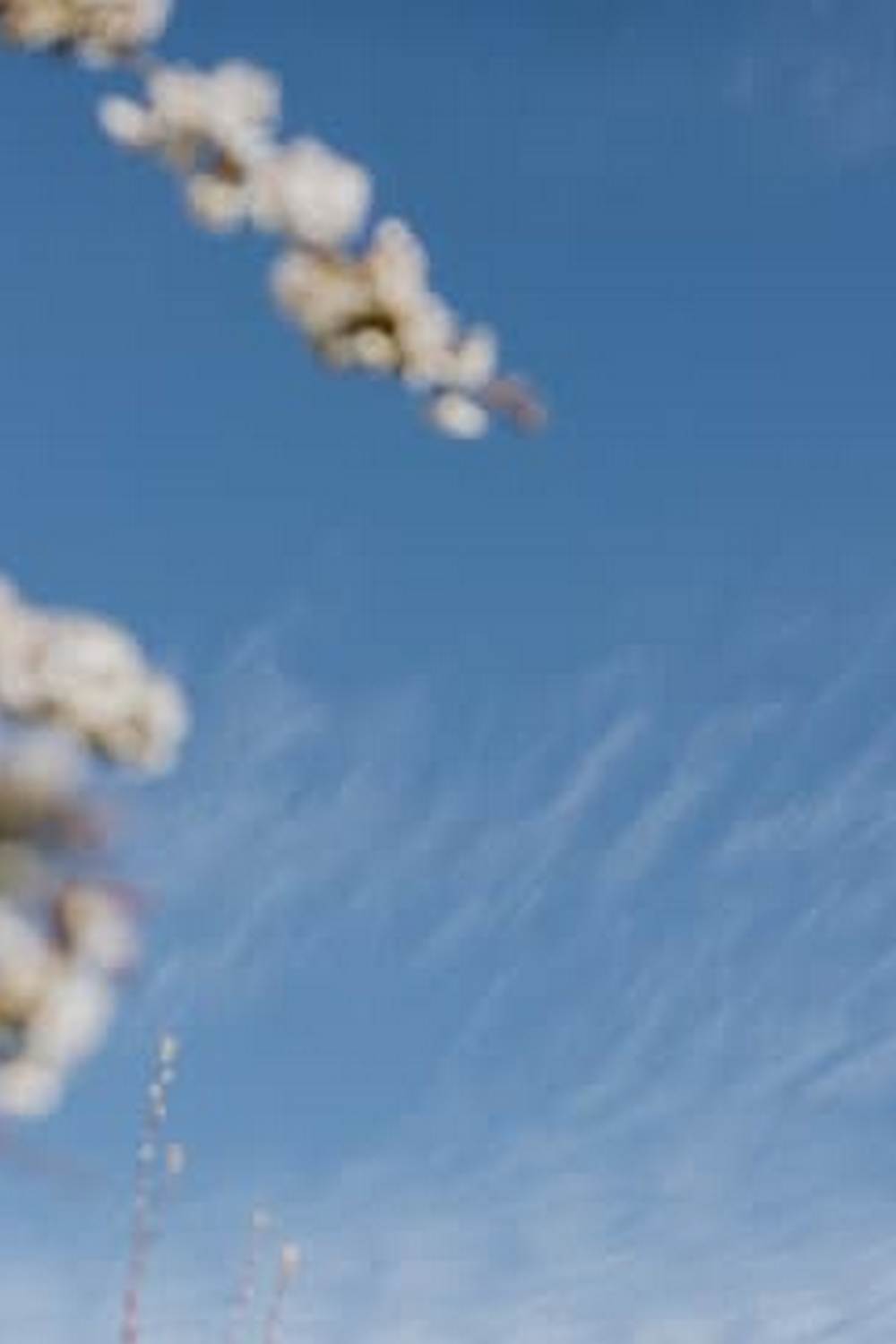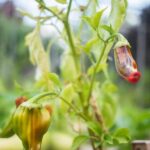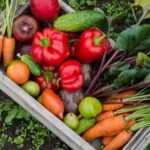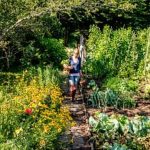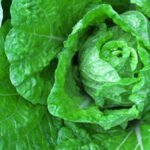Nestled in the heart of the Coachella Valley, Palm Desert is a thriving city known for its stunning desert landscapes and warm climate. With its sunny weather and arid conditions, this region presents unique challenges for individuals looking to cultivate their own vegetable gardens. In this article, we will explore the ins and outs of vegetable gardening in Palm Desert, offering valuable insights and tips for both novice and experienced gardeners.
Palm Desert experiences a desert climate characterized by extremely hot summers and mild winters. The average annual rainfall is minimal, making it essential for gardeners to adapt their techniques to accommodate the arid environment. Despite these challenges, with the right approach and knowledge of suitable plant species, successful vegetable gardening is certainly achievable in Palm Desert.
In the following sections, we will delve into the best vegetables to grow in Palm Desert’s climate, as well as provide guidance on soil preparation, location selection, irrigation methods, pest management, harvesting, and preserving your garden’s bounty. Additionally, we will share inspiring success stories and highlight community resources that can prove invaluable to individuals passionate about vegetable gardening in Palm Desert.
Whether you are a resident or visitor eager to embrace sustainable practices or simply enjoy the rewarding experience of growing your own produce, this article aims to equip you with the tools for successful vegetable gardening in Palm Desert‘s unique environment.
Best Vegetables to Grow in Palm Desert
Palm Desert is known for its hot, arid climate, which can make vegetable gardening a bit of a challenge. However, with the right knowledge and techniques, it is possible to grow a variety of vegetables in this desert environment. When it comes to choosing the best vegetables to grow in Palm Desert, it’s important to select varieties that are well-suited to high temperatures and low humidity.
Heat-Tolerant Vegetables
One of the most important factors to consider when selecting vegetables for your Palm Desert garden is heat tolerance. Some vegetables that thrive in high temperatures include tomatoes, peppers, eggplants, and okra. These heat-loving plants are well-suited to the climate of Palm Desert and can produce bountiful harvests if properly cared for.
Drought-Resistant Vegetables
In addition to being heat-tolerant, it’s essential to choose vegetables that are able to withstand periods of drought. Crops such as sweet potatoes, carrots, and radishes have deep root systems that allow them to access moisture from deeper in the soil. These drought-resistant vegetables are well-suited for the dry climate of Palm Desert and can be a reliable addition to your garden.
Quick-Growing Vegetables
Given the short growing season in Palm Desert, it’s also beneficial to choose quick-growing vegetables that can mature before the extreme heat sets in. Leafy greens like lettuce, spinach, and kale are excellent choices for early spring planting and can be harvested before the summer temperatures peak. Additionally, fast-maturing crops such as zucchini and cucumbers can be planted later in the season for a successful harvest.
Tips for Preparing the Soil for Vegetable Gardening in Palm Desert
Palm Desert, located in the Coachella Valley of Southern California, is known for its hot and arid climate. The desert environment can pose some challenges for vegetable gardening, but with the right techniques and preparation, it is possible to grow a thriving and productive garden. One of the key factors in successful vegetable gardening in Palm Desert is preparing the soil properly.
Soil Testing and Amendment
Before starting your vegetable garden, it’s important to test the soil to determine its composition and any deficiencies it may have. Many areas in Palm Desert have sandy or clay-like soil, which may require amendment to improve its structure and fertility. Adding organic matter such as compost, well-rotted manure, or peat moss can help improve the texture and nutrient content of the soil.
Remove Rocks and Debris
In many desert environments, rocks and debris can be common in the soil. Before planting your vegetable garden, take the time to clear the area of rocks, stones, and other debris that could impede root growth or interfere with irrigation. This will also make it easier to cultivate the soil and create planting beds.
Mulching
Applying a layer of mulch to your vegetable garden’s soil can help conserve moisture, regulate soil temperature, and suppress weed growth. Organic mulches such as straw, wood chips, or shredded leaves are excellent choices for Palm Desert gardens.
By taking these steps to prepare the soil for your vegetable garden in Palm Desert, you can create an optimal growing environment for a wide variety of vegetables. With proper soil preparation, you’ll be on your way to enjoying a bountiful harvest of fresh produce from your own backyard oasis.
Choosing the Right Location for Your Vegetable Garden in Palm Desert
When it comes to vegetable gardening in Palm Desert, choosing the right location is crucial for the success of your garden. The extreme heat and dry climate of Palm Desert can pose challenges, but with the proper location, you can maximize your chances of a bountiful harvest.
Here are some tips for choosing the right location for your vegetable garden in Palm Desert:
- Accessibility to Water: Since water is essential for vegetable gardening in Palm Desert, choose a location that is easily accessible to your irrigation system or hose. Consider proximity to water sources and the ease of watering your plants regularly.
- Sun Exposure: Most vegetables thrive in full sun, so it’s important to choose a location that receives at least 6-8 hours of sunlight per day. Take note of any potential shade from nearby structures or trees that could impact sun exposure.
- Wind Protection: The desert climate can bring strong winds, which can be damaging to tender vegetables. Select a location that is sheltered from strong winds, such as against a wall or fence.
By carefully considering these factors, you can choose an ideal location for your vegetable garden in Palm Desert that sets you up for success. With the right location, you’ll be on your way to enjoying delicious homegrown produce despite the challenges of the desert climate.
Watering and Irrigation Techniques for Vegetable Gardening in Palm Desert’s Dry Climate
Palm Desert is known for its arid climate, with scorching summers and minimal rainfall. This makes it crucial for vegetable gardeners in the area to have effective watering and irrigation techniques to ensure their plants thrive. One popular method for watering in Palm Desert is drip irrigation, which delivers water directly to the base of the plants, minimizing evaporation and water waste. This can be especially beneficial for vegetable gardening in the desert, where every drop of water counts.
Another important technique for watering and irrigation in Palm Desert is to water deeply but infrequently. This encourages plant roots to grow deeper into the soil in search of moisture, making them more resilient during periods of drought. Additionally, using mulch around vegetable plants can help retain soil moisture and reduce the frequency of watering. These techniques are essential for successful vegetable gardening in Palm Desert’s dry climate, allowing gardeners to conserve water while still nurturing their crops.
It’s also important for gardeners in Palm Desert to be mindful of local water regulations and restrictions when planning their watering and irrigation schedule. By adhering to these guidelines, vegetable gardeners can contribute to overall water conservation efforts in the region while still enjoying a bountiful harvest.
| Watering Technique | Benefits |
|---|---|
| Drip Irrigation | Minimizes evaporation and water waste |
| Deep but Infrequent Watering | Promotes deep root growth and reduces water usage |
| Mulching | Retains soil moisture and reduces the need for frequent watering |
Pest and Disease Management for Vegetable Gardens in Palm Desert
Palm Desert, with its hot and arid climate, presents unique challenges when it comes to vegetable gardening. Pests and diseases can thrive in these conditions, making it essential for gardeners to be proactive in their management strategies. Here are some tips for effectively managing pests and diseases in your vegetable garden in Palm Desert:
1. Identify and monitor common pests: Keep an eye out for common pests such as whiteflies, aphids, spider mites, and thrips. Regularly inspect the leaves and stems of your plants for any sign of infestation. Utilize sticky traps to catch flying insects and monitor the population levels of these pests.
2. Implement natural pest control methods: To minimize the use of chemicals in your garden, consider employing natural pest control methods such as introducing beneficial insects like ladybugs or lacewings, using neem oil or insecticidal soap sprays, and practicing companion planting with pest-repelling plants.
3. Preventive disease management: In Palm Desert’s dry climate, plant diseases such as powdery mildew and root rot can pose a threat to your vegetable garden. To prevent these diseases, ensure proper spacing between plants to promote air circulation, avoid overhead watering which can lead to fungal growth, and rotate your crops annually to reduce the risk of soil-borne diseases.
By being vigilant in monitoring potential pest and disease threats while implementing proactive management strategies, you can safeguard your vegetable garden in Palm Desert from potential damage while ensuring a bountiful harvest of healthy produce. Remember that successful vegetable gardening in Palm Desert requires adapting traditional techniques to suit the unique challenges presented by the local climate.
Harvesting and Preserving Your Vegetable Garden’s Produce in Palm Desert
Growing your own vegetables in Palm Desert can be incredibly rewarding, but the work doesn’t end when the vegetables are fully grown. Harvesting and preserving your produce is a crucial step in the vegetable gardening process.
When it comes to harvesting your vegetables, timing is key. Each vegetable has its own optimal time for harvesting, so it’s important to do some research on the specific vegetables you’re growing. For example, tomatoes should be harvested when they’re firm and fully colored, while lettuce should be harvested before it bolts and becomes bitter.
Once you’ve harvested your vegetables, it’s time to think about preservation. In Palm Desert’s dry climate, proper storage is essential to prevent your produce from spoiling. Canning, drying, and freezing are all great options for preserving your vegetables. Additionally, consider making pickles or jams with any surplus produce – not only are these delicious options for long-term storage, but they also make great gifts for friends and neighbors.
Finally, don’t forget to share the fruits of your labor with your community. Consider donating any excess produce to local food banks or participating in a community garden program that shares the harvest with those in need. By doing so, you can not only reduce food waste but also strengthen the bond within your community.
| Harvesting | Preservation |
|---|---|
| Timing is crucial for optimal harvesting | Canning, drying, freezing |
| Consider making pickles or jams with surplus produce | Share excess produce with local food banks and community garden programs |
Success Stories and Community Resources for Vegetable Gardening in Palm Desert
In conclusion, vegetable gardening in Palm Desert can be a rewarding and fruitful experience for both beginners and seasoned gardeners. With the right knowledge and resources, it is possible to grow a variety of delicious and nutritious vegetables despite the challenges posed by the desert climate.
The success stories of local gardeners in Palm Desert serve as an inspiration for those who are looking to start their own vegetable gardens. By learning from these experiences, aspiring gardeners can gain valuable insight into what works best in this unique environment and how to overcome obstacles such as extreme heat and low humidity.
Additionally, the community resources available for vegetable gardening in Palm Desert provide a wealth of support and information for individuals looking to get started or improve their existing gardens. From gardening clubs to local nurseries specializing in desert-friendly plants, there are plenty of opportunities for gardeners to connect with like-minded individuals and learn from each other’s experiences.
Together, the community can work towards creating sustainable and thriving vegetable gardens in Palm Desert, showcasing the beauty and abundance that is achievable even in this challenging environment.
Frequently Asked Questions
What Is the Easiest Vegetable to Grow in the Desert?
The easiest vegetable to grow in the desert is likely the cactus. Cacti are well-adapted to arid environments and require minimal water to thrive, making them a suitable option for desert gardening.
Can You Grow a Vegetable Garden in Palm Springs?
Yes, it is possible to grow a vegetable garden in Palm Springs. While the hot and dry climate can present some challenges, with proper soil preparation, irrigation, and selection of heat-tolerant plants, successful vegetable gardening is achievable in Palm Springs.
When Should I Start a Vegetable Garden in California?
In California, the best time to start a vegetable garden is typically in early spring. This allows for a longer growing season before the heat of summer sets in. However, specific timing may vary depending on the region within California and the individual needs of different vegetables.

If you’re looking to get into vegetable gardening, or are just looking for some tips on how to make your current garden better, then you’ve come to the right place! My name is Ethel and I have been gardening for years. In this blog, I’m going to share with you some of my best tips on how to create a successful vegetable garden.

